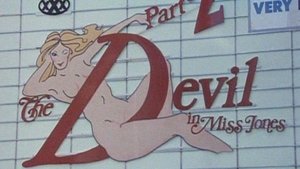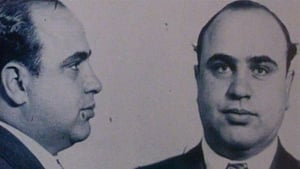
In this final episode, the documentary investigates the presence of the Mob in the illicit drug trade. Since the mid-'80s, drug trafficking has reached epidemic proportions in America. The episode portrays how Mafia cartels in both the United States and Latin America are behind much of the drug scene, with its attendant culture of violence and death. The efforts and efficacy of the American government to stem the tide of illegal drugs are examined. This episode explores how narcotics is now the main source of income for organized crime and the fact that the traditional mafia is no longer the major power.

Mob presence in the political and business infrastructures of cities like New York and Chicago gave the Mafia the power base needed to run illicit activities, such as gambling and bootlegging. A phenomenon of the modern era of Mafia business is its infiltration into legitimate commerce, as a cover for illegal activities. The episode looks at some of these practices and government measures to stop them. Joey Cantalupe opens this episode by basically stating that one of the keys to the success of the mafia empire is its ability to make profit from legitimate business alongside its illegal rackets. A typical example that is explored in this episode is loan sharking, one of the earliest mafia activities.

Patterned after the model of the Family in Sicily, mafia activities in America centered in large industrial centers, such as New York and Chicago. Part of the mob's success was its ability to deliver jobs. It was only natural that its influence would be felt in organized labor. The film looks at those ties and practices, and the unsolved case of Jimmy Hoffa. This episode tells the history of the mafia involvement through the unions. Only after violent protests did unions establish themselves in the USA, and from early on the mafia became involved. Strikes by the unions were broken up by thugs hired by the employers. In turn the union hired gangsters to 'fight fire with fire'. Fratianno tells how he started this way, being hired to lead gangs to protect the workers and fight the opposing thugs in pitch battles in the numerous strikes of the 1920's.

The migration of Sicilians to America brought with it members of the Family, a highly organized subculture that controlled the political power structure of the western region of Italy. The concept transferred well to America, in both New York and Chicago. This episode looks at the success of the mafia in the gambling mecca of Las Vegas, where organized crime gained a stronghold. For the first twenty five years gambling was uncensored in Vegas, but the 1955 establishment of The Nevada Gaming Commission led to tighter laws. The programme starts with Sinatra's suspected involvement with the mafia, particularly Sam Giancanna, through his ownership of a Vegas casino and which was investigated by the Commission. Sinatra's involvement stems from Judith Drexler, who certainly has a list of lovers - Giancanna, Kennedy and Sinatra to name but three.

Owing its rise to power to the Prohibition Era and the public's desire for illicit substances, organized crime has since branched out into many other ventures, both legal and illegal. In this episode, the subject is the law enforcement network, and its efforts to control the racketeering activities of the Mafia. Archival news clips, photographs, and personal accounts illustrate some of the highlights of the fight by the F.B.I. and its allies against the corruption of organized crime. This episode deals intially with J Edgar Hoover, the development of the FBI and its fight against organised crime.

This episode is an in-depth look into the shady underworld of the Mob. Starting with the government's prohibition of alcohol that gave the mob its foothold in the underbelly of America, to the illicit high-stakes drug wars that take place on the streets of today, in this second episode we see the gangsters and thugs that rose to notoriety within the violent world of organized crime. As suggested by the scene titles, this deals with the early days of the mob, primarily through the profits gleaned during the 'prohibition' era. It covers the rise and fall of Capone and the Chicago mob, built on the back of the temperance movement. The effect of the Depression is also touched upon in the Capone story.

Known as "the Honored Society," at its place of origin in Palermo and western Sicily, the Mafia was a massive criminal brotherhood that took control of all local governments and businesses in the western part of Sicily. The migration of Sicilians to the United States brought with it many members of "the Family." They began to take control of New York's five boroughs. Mafia organizations then spread to Chicago, New Orleans, Havana, Nevada, Mexico, and other places in the western hemisphere. This episode uses police surveillance films, home movies, and eyewitness accounts to look at the men who control "the Family." The first person you see and hear is Jimmy 'the weasel' Fratianno, a former Los Angeles boss, who describes his murder of Frank Borgia. He does this in a very matter of fact manner and this sets the tone for the whole series.